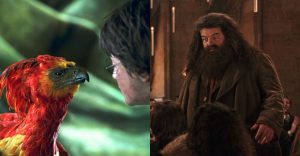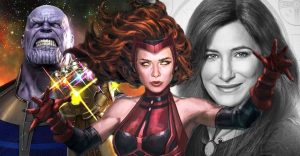Spider-Man: Far From Home’s Villain Plan Explained
Warning: MAJOR SPOILERS ahead for Spider-Man: Far From Home.
Spider-Man: Far From Home is the latest Marvel Cinematic Universe movie to include a big villain twist, with Mysterio (Jake Gyllenhaal) revealed to be the film’s antagonist. Not only that, but Mysterio’s plan to defeat Spider-Man also has a direct connection to Tony Stark.
When Gyllenhaal was first cast as Mysterio, real name Quentin Beck, it was naturally assumed he’d be the film’s villain, since the character is a Spider-Man foe in the comics. However, the marketing for Spider-Man: Far From Home went to great lengths to convince us that he was actually a hero, with scenes of him fighting against the Elementals (the alleged villains of Far From Home) and working alongside Nick Fury. The story went that he was from a parallel Earth, and the Elementals had destroyed his homeworld, so now he was here to fight them. Few were buying it though, and sure enough Spider-Man: Far From Home does ultimately make Mysterio into the villain.
Crucially, it’s not quite as simple as it sounds. Mysterio, in his own warped way, wants to be a hero and save the world, but his complicated plan to get there is what then makes him into a villain. Here’s what’s really going on with Spider-Man: Far From Home‘s villain.
Mysterio Is A Former Stark Employee Who Wants To Become The New Iron Man

Before he was Mysterio, he was Quentin Beck, an employee at Stark Industries. A tech genius, Beck was the one who actually created the augmented memory software that Tony Stark debuted in Captain America: Civil War, Binarily Augmented Retro-Framing, better known as B.A.R.F. Beck was unhappy at how his groundbreaking tech became little more than a vanity project for Tony, causing him to leave the company. Beck surrounds himself with similar people, including a scientist named William, who Obadiah Stane forced to attempt to recreate the arc reactor, although he failed.
The reason for this being Mysterio’s team in Spider-Man: Far From Home is that he (and they) wants a sense of revenge, not just on Tony Stark personally, but on all superheroes. He’s seen firsthand how they have (in his mind) lived free lives without any responsibility for their actions. Tony Stark, to him, is a war profiteer who was allowed to do as he pleased for being an Avenger. Now, in the wake of Avengers: Endgame and the death of Iron Man, there’s a gap in the superhero market and a chance for change.
Beck aims to exploit that for himself, so that he can be the hero. On the surface, it’s because he wants heroes to be everymen, not just the privileged few like Tony Stark, but the flaw in that is it’s he who so desires to be the hero. It’s really for him, not everyone.
Mysterio Faked The Multiverse & The Elementals (Using Advanced Hologram Technology)

Although there was a lot of suspicion around Mysterio and the Elementals based on Spider-Man: Far From Home‘s trailers, one thing that was more accepted, albeit still with some skepticism, was the idea of the multiverse. It was claimed that Thanos’ Snap (or the Blip, as it’s called here) tore a hole in the universe, opening up the doors to parallel Earths. It’s from one of these – Earth-833 – that Mysterio apparently comes from, and the Elementals have destroyed his world and followed him here.
As it turns out, it’s all one big lie. The multiverse. The Elementals. All of it. Using an advanced version of the B.A.R.F. technology combined with drones, Mysterio himself is responsible for creating the Elementals; they’re not real, but mere projections, which is how he’s able to ‘defeat’ them. The multiverse, meanwhile, is a story made up by a writer. It does exist within the MCU in ways previously established – Quantum Realm, Dark Dimension etc – but the multiverse as explained by Spider-Man: Far From Home doesn’t exist.
This is all part of Mysterio’s grand plan to make himself Earth’s newest superhero. The multiverse gives him a compelling (and tragic) backstory that also explains why he’s never been heard of before now, and the Elementals are a giant, all-powerful enemy for him to beat and look super impressive.
Mysterio’s Final Plan In Spider-Man: Far From Home

Towards the end of Spider-Man: Far From Home, after battling Elementals in Venice and Prague, Mysterio heads to London for the final stage of his plan, where he’ll be delivering the greatest show of all. By this point he’s already fought Spider-Man in Berlin, so knows he has to be taken out, but that actually works in his favor here. Now he can add to the sense of loss – and his own heroics – by having Spider-Man and countless others killed in his final attack, which involves a suped-up combination of Elementals. If he’s the hero in a huge, death-heavy disaster, then his fame and popularity will skyrocket and he can become Earth’s mightiest hero.
What he didn’t quite count on, though, is that Spider-Man would never give up. Using his heart and his Spider-sense – which in Spider-Man: Far From Home is called his ‘Peter Tingle’ – he’s able to break through the warped reality that Mysterio has created around him as protection. With the illusion shattered, Spider-Man can take down and avoid the drones in order to get to Beck, and without his tricks he isn’t a physical match for a real superhero like Spidey.
Mysterio does attempt one final magic act, using a fake version of himself to make a sneak attack on Peter with a gun, but Spider-Man’s senses are still too sharp. Peter not only avoids being shot, but the rogue bullet actually ends up hitting and killing Beck.
Mysterio’s Contingency Plan Is To Reveal Spider-Man’s Secret Identity Upon His Death

You might think that being fatally shot would be the end of Mysterio, but the Spider-Man: Far From Home villain isn’t going to let a little thing like death get in the way of his plans to be celebrated as a great hero. Beck had a contingency plan, which involved filming his final moments, and doctoring footage of Spider-Man to make it appear as though he was ordering a drone attack and had killed Mysterio for no good reason. The video was then sent to none other than The Daily Bugle.net, with the famous newspaper reinvented as an InfoWars style website.
Distributed by The Daily Bugle’s editor, J. Jonah Jameson (with J.K. Simmons surprisingly returning to the role), the video makes a huge splash in New York. Not only does it seemingly cement Mysterio as a hero and turn Spider-Man into a villain, but it also reveals to the world that Peter Parker is Spider-Man. Beck couldn’t live, but in death he made sure to take down that which he hated, with Spider-Man representative of Tony Stark’s legacy. Mysterio, meanwhile, is declared the greatest superhero to have ever lived by Jameson. It’s a victory even in defeat.
Mysterio Is More Like The Comics In Far From Home Than You Think

Mysterio is now very much ingrained as a Spider-Man villain, and because of that his attempts at becoming a hero – however misjudged – might seem a little off in comparison to his comic book counterpart. That’s true in a broad sense, but the version of Mysterio in Spider-Man: Far From Home does bear a few similarities to that from the page, and especially the character’s very first appearance in The Amazing Spider-Man #13.
There, we see Spider-Man apparently committing crimes, with the web-slinger himself confused as to what’s going on. That’s when Mysterio appears, promising to bring Spider-Man to justice. Of course, it’s later revealed that Mysterio was framing Spider-Man, but right in his debut is the idea of him publicly being the good guy and Spider-Man the baddie, which is something Spider-Man: Far From Home director Jon Watts told Screen Rant, saying: “Mysterio enters the comic as a hero. So, I always took it right back to the source material and what made that character exciting initially.”
What Mysterio Represents In Spider-Man: Far From Home

In Spider-Man: Far From Home, Mysterio represents something similar to what Vulture did in Spider-Man: Homecoming, albeit from a different angle. Vulture didn’t directly work for Tony Stark, but he did lose his job because of him, which then led to his turn to villainy. Mysterio is the same, only with a more direct connection. He harbors a deep resentment of Stark on a personal level because of how his tech was used, but also of superheroes in general, due to how they have been able to operate on a different plane of existence without any of the accountability that everyone else has to face.
It worked well in Spider-Man: Homecoming coming off the back of Captain America: Civil War and the Sokovia Accords, and it works just as well in Far From Home, coming after Endgame and the death of Iron Man. It gives Beck’s way of thinking a fascinating placement because it’s wrapped up in Tony’s entire legacy and how he’s viewed by different people in the MCU, and how we view him too. Spider-Man is a testament to all the good that Tony achieved, but Mysterio works as a reminder of his many failures too. That’s great in the context of his death, because it ensures his legacy endures not just as purely heroic, but as someone intrinsically human and flawed.
It also goes with Mysterio’s belief that people will now believe anything. That fits with the movie’s attempts at discussing the importance of truth and fake news, but it also shows just how crazy the world is post-Decimation. That’s been an escalating thing across the MCU, but after half the universe was wiped out for five years and then came back, it’s bigger and weirder than ever in Spider-Man: Far From Home, and Mysterio serves to highlight that. If someone can be snapped out of existence and return unchanged, then just about anything can happen.
About The Author

















